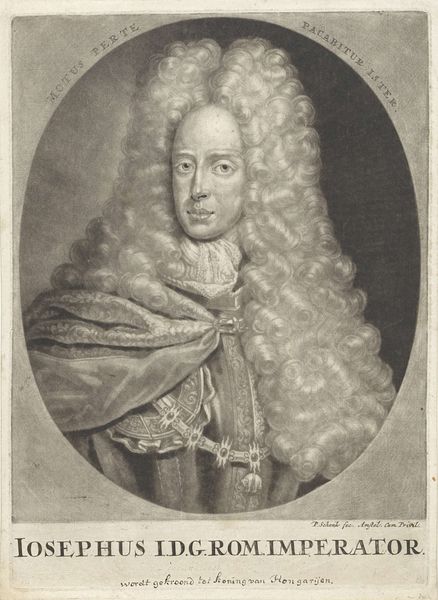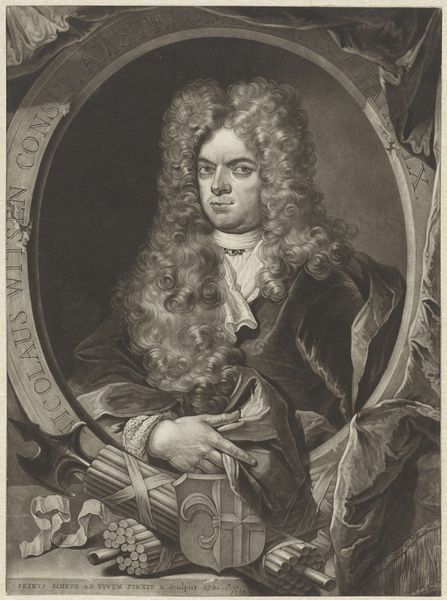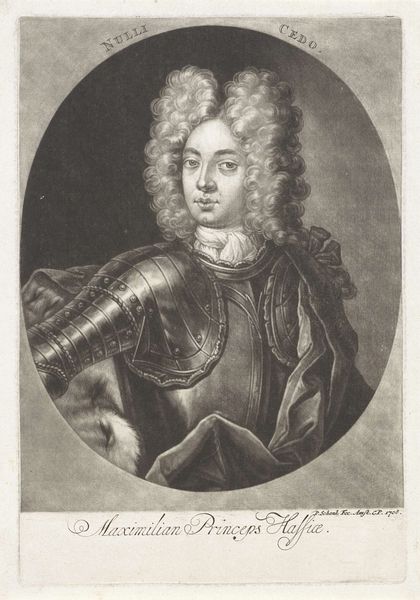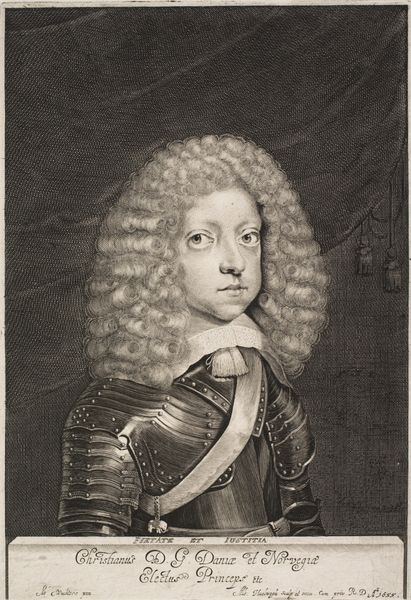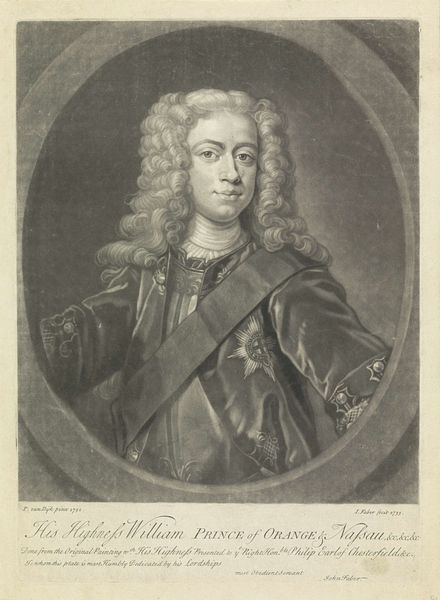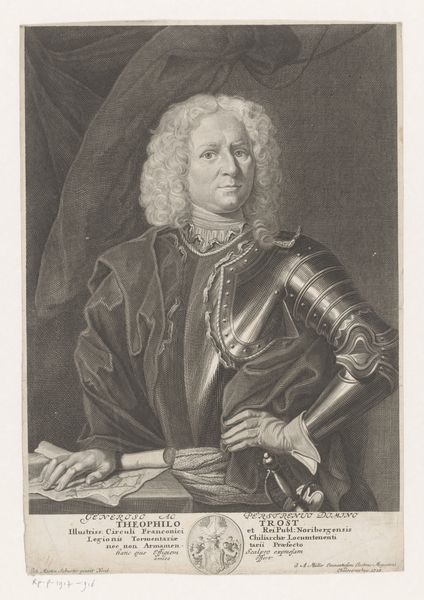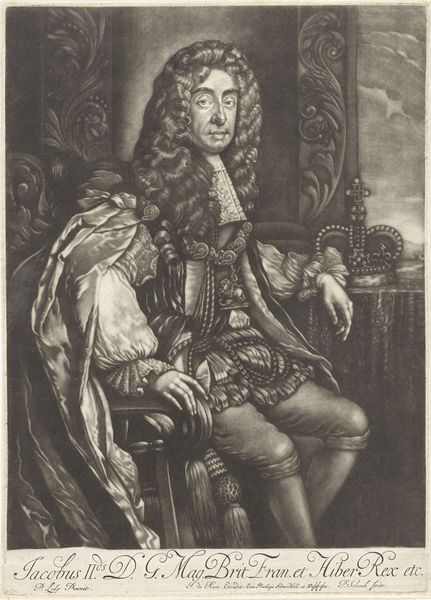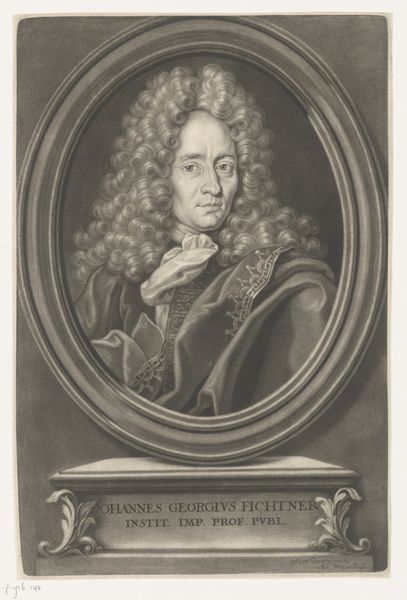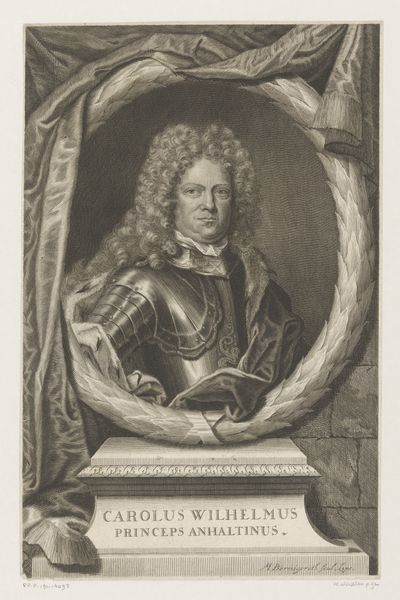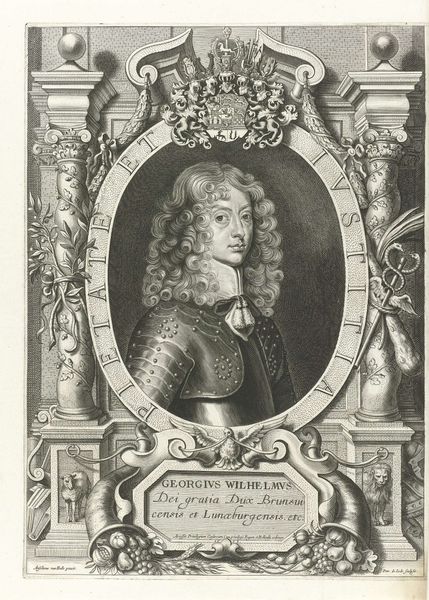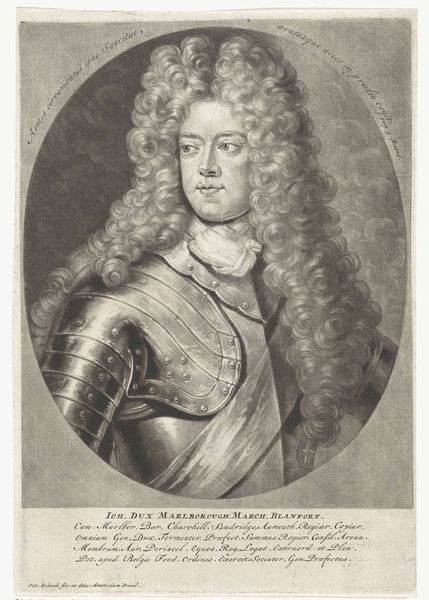
Portret van Willem Karel Hendrik Friso van Oranje-Nassau 1731 - 1748
0:00
0:00
mixed-media, engraving
#
portrait
#
mixed-media
#
baroque
#
old engraving style
#
portrait reference
#
portrait drawing
#
history-painting
#
northern-renaissance
#
engraving
Dimensions: height 281 mm, width 206 mm
Copyright: Rijks Museum: Open Domain
Editor: This is a portrait of Willem Karel Hendrik Friso van Oranje-Nassau, made sometime between 1731 and 1748 by Philippus Endlich, using engraving techniques. It's fascinating how detailed the lines are, especially on his robe, but overall the artwork gives me a sense of stiffness. How do you interpret this work? Curator: The beauty of the artwork lies, precisely, in the formal interplay between its intricate line work and carefully constructed composition. Consider the use of hatching and cross-hatching: how do they create a range of tonal values, building depth and volume, and the textural contrast of the fabrics, from the drape in the background to the velvety material of the sitter's attire? The artist juxtaposes detailed areas, like the ornamentation on his jacket, with flatter expanses to guide our eyes through the composition, but this compositional choice inevitably flattens depth. How would you contrast this treatment against the sitter’s facial treatment? Editor: Yes, now I see the emphasis on the tactile quality, and how those precise engraving techniques capture details and fabric textures. However, there’s also the almost diagrammatic approach on his face and body—a sort of disjunction or tension created through the artist’s strategic deployment of such markedly different stylistic rendering of shapes and texture. It's more than just a faithful likeness. Curator: Indeed. The formal elements articulate status. The textures, lines, and the subject’s pose contribute to constructing an image of power. The verticality emphasized by the staff directs the viewer upwards, while the light falls strategically on the subject, creating visual power. Editor: It's interesting to see how the combination of those artistic methods, together, shape meaning and direct how the viewer interprets the artwork. Curator: Precisely. Appreciating how the work is formally structured enhances our understanding and overall interpretation of the engraving’s historical and cultural relevance.
Comments
No comments
Be the first to comment and join the conversation on the ultimate creative platform.

